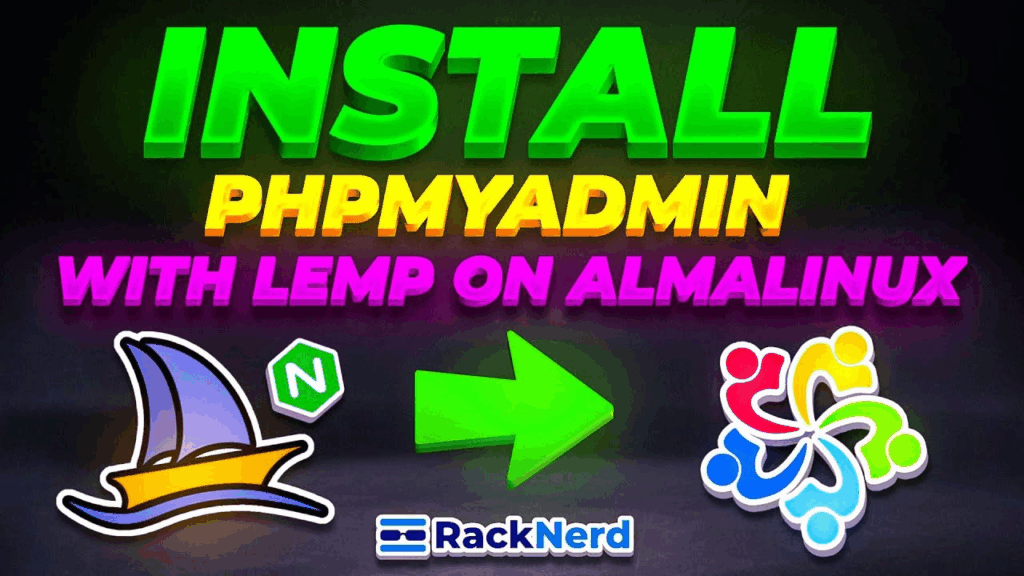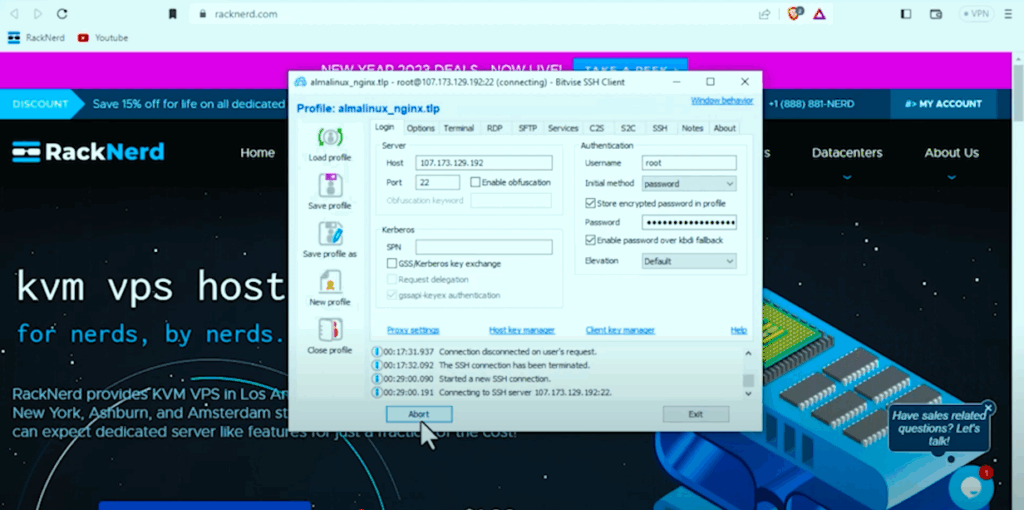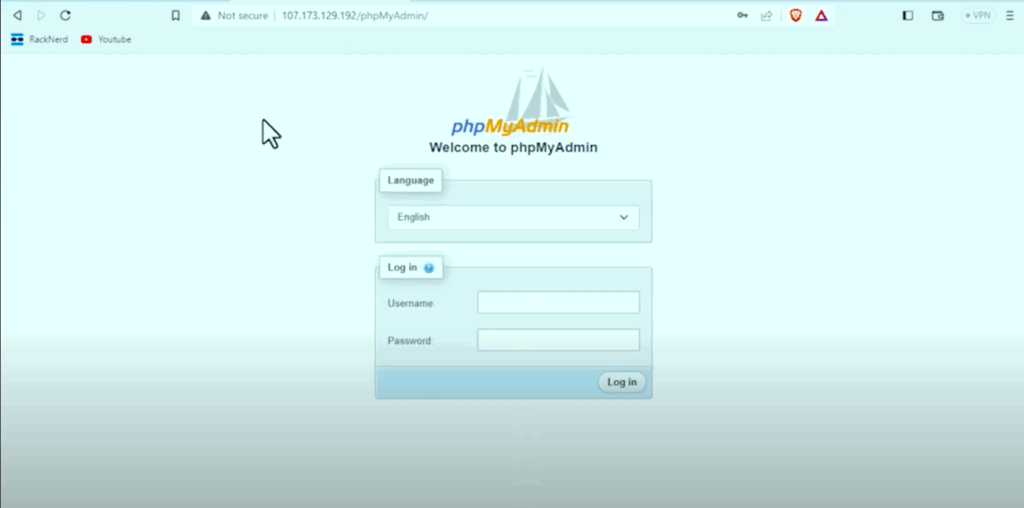How to Install PHPMyAdmin with LEMP on AlmaLinux OS
Leave a comment on How to Install PHPMyAdmin with LEMP on AlmaLinux OS
Managing databases directly from the command line can feel overwhelming—especially for those just starting out with Linux hosting. That’s where phpMyAdmin comes in: a free, web-based tool that simplifies MySQL and MariaDB database management.

In this guide, we’ll walk through the step-by-step process of installing phpMyAdmin on a LEMP stack (Linux, Nginx, MariaDB/MySQL, PHP) running on AlmaLinux OS. By the end, you’ll have a fully functional phpMyAdmin interface ready to use.
Why Use phpMyAdmin?
- User-Friendly: Manage databases via a graphical web interface.
- Simplifies Management: Create, modify, or delete databases and tables easily.
- Powerful Query Interface: Run complex SQL queries without relying entirely on CLI.
- Migration & Backup: Import/export databases with just a few clicks.
- User Management: Add, remove, or manage users with different privilege levels.
Prerequisites
Before following along with this article, make sure you have:
- AlmaLinux OS installed and running on your server.
- A fully set up LEMP stack (Linux, Nginx, MariaDB/MySQL, PHP).
- Root or sudo access to the server.
If you haven’t set up your LEMP stack yet, check out our RackNerd guide on setting up LEMP before proceeding.
Step-by-Step Installation of phpMyAdmin on AlmaLinux
Step 1: Connect to Your Server via SSH
Use your preferred SSH client:
- Windows: PuTTY or Bitvise SSH
- macOS/Linux: Built-in Terminal
ssh root@your-server-ip

Step 2: Update Your Server Packages
Run the following to ensure your server is up to date:
dnf update -y

Step 3: Install Essential Tools
Install Nano editor, wget, and zip (needed for configuration and handling packages):
dnf install nano wget zip -y

Step 4: Enable EPEL and Remi Repositories
phpMyAdmin isn’t available in AlmaLinux’s default repo, so enable EPEL and Remi:
dnf -y install epel-release -y
dnf -y install https://rpms.remirepo.net/enterprise/remi-release-8.rpm

Step 5: Install phpMyAdmin
Enable Remi repository and install phpMyAdmin:
dnf –enablerepo=remi install phpMyAdmin -y

Step 6: Backup and Edit Nginx Configuration
Create a backup of the phpMyAdmin Nginx config file:
cp /etc/nginx/default.d/phpMyAdmin.conf /etc/nginx/default.d/phpMyAdmin.conf.bak

Open the configuration file:
nano /etc/nginx/default.d/phpMyAdmin.conf
Replace this line:
fastcgi_pass php-fpm;
With this line:
fastcgi_pass unix:/var/run/php-fpm/php-fpm.sock;
Save and exit (CTRL+X, then Y, then ENTER).

Step 7: Fix phpMyAdmin Session Directory Permissions
Run the following commands to prevent session errors:
chown -R nginx:nginx /var/lib/php/session
chmod -R 0700 /var/lib/php/sessio
Step 8: Restart LEMP Services
Apply changes by restarting Nginx and PHP-FPM:
systemctl restart {nginx,php-fpm}
Check status to confirm services are running:
systemctl status {nginx,php-fpm}

Step 9: Access phpMyAdmin in Browser
Open your browser and go to:
http://your-server-ip/phpMyAdmin

Log in with your MariaDB/MySQL root credentials, and you should see the phpMyAdmin dashboard.
Quick Reference Table
| Step | Command / Action | Purpose |
| Step 1 | ssh root@your-ip | Connect to server |
| Step 2 | dnf update -y | Update packages |
| Step 3 | dnf install nano wget zip -y | Install tools |
| Step 4 | Enable EPEL & Remi | Access phpMyAdmin package |
| Step 5 | dnf –enablerepo=remi install phpMyAdmin -y | Install phpMyAdmin |
| Step 6 | Edit phpMyAdmin.conf | Configure Nginx |
| Step 7 | chown & chmod | Fix session permissions |
| Step 8 | systemctl restart {nginx,php-fpm} | Restart services |
| Step 9 | Browser → /phpMyAdmin | Access phpMyAdmin |
FAQs
❓ What is phpMyAdmin?
phpMyAdmin is a free, web-based tool that simplifies managing MySQL and MariaDB databases via a browser interface.
❓ Why do we need the Remi and EPEL repositories?
phpMyAdmin isn’t included in AlmaLinux’s default repo. Remi and EPEL provide reliable, up-to-date packages.
❓ Can I secure phpMyAdmin further?
Yes. Restrict access via Nginx configuration, enable SSL, or add IP-based restrictions for enhanced security.
❓ What if I get a 403 Forbidden error?
Check the Nginx config and ensure permissions on /var/lib/php/session are correctly set.
❓ Can I install phpMyAdmin on Apache instead of Nginx?
Yes. The steps vary slightly since Apache uses different configuration files, but phpMyAdmin works with both LAMP and LEMP stacks.
Conclusion
Congratulations—you’ve successfully installed and configured phpMyAdmin on a LEMP stack running AlmaLinux OS. With this setup, managing your MySQL and MariaDB databases becomes faster, easier, and more efficient.
Whether you’re handling database migrations, user management, or routine backups, phpMyAdmin provides the flexibility you need without constantly relying on the command line.
At RackNerd, we’re here to support your hosting journey. For more guides, hosting solutions, and expert support, visit RackNerd.com.
